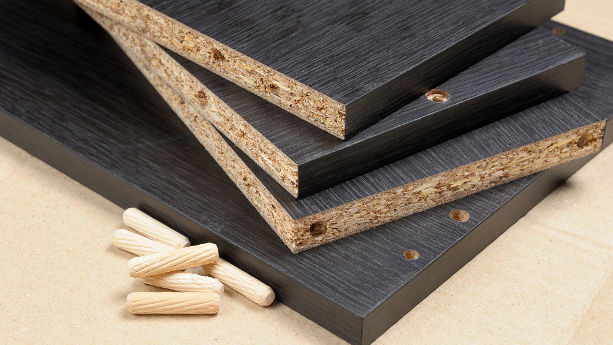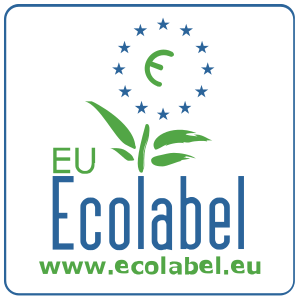Formaldehyde can be found by various products, including wooden products, plastics, and cosmetics. Due to its toxicity, there are regulations in the European Union that restrict the content or release of formaldehyde.
As such, importers and manufacturers of products that contain or can contain formaldehyde must ensure that their products comply with the applicable regulations, directives, and standards that limit its the use. This can generally be assessed by performing the necessary testing.
In this guide, we explain what formaldehyde is, and which regulations restrict its usage, release, or emission. We also provide examples of relevant standards, and explain why lab testing is necessary.
Content Overview

FREE CONSULTATION CALL (US, EU & UK)
- Request a free 30-minute call with Ivan Malloci to learn how we can help you with:
- Find product requirements
- Certification and labeling
- Lab testing
What is formaldehyde?
According to the European Chemicals Agency (ECHA), formaldehyde is a gas that is:
- Very reactive
- Extremely toxic
- Carcinogenic and harmful to one’s DNA
- Mainly used as an intermediate chemical when making formaldehyde-based resins
Products that are manufactured using formaldehyde-based chemicals can release it, which negatively affects human health.
Here are some examples of products that may contain formaldehyde:
- Cosmetics
- Wood-based products
- Modelling clay
- Inks and toners
- Washing and cleaning products
- Adhesives and sealants
Is formaldehyde banned in the European Union?
Certain EU regulations restrict the use, release, or emission of formaldehyde content in certain products or materials.
Here is a list of regulations and directives that we know of, that either restrict or ban the use of formaldehyde in the EU:
- REACH Regulation
- Toy Safety Directive
- Cosmetics Products Regulation
- Plastic FCM Regulation (EU) 10/2011
- Regenerated Cellulose Film Directive 2007/42/EC
- Biociodal Products Regulation
- EU Ecolabel Regulation

Which products and materials may contain formaldehyde?
According to the ECHA, various products and materials may contain formaldehyde. Here we list some examples:
- Cosmetics
- Toys
- Construction products
- Food-contact materials
- Adhesives and sealants
- Fillers
- Plasters
- Polymers
- Disinfectants
- Pest control products
- Polishes and waxes
- Cleaning products
REACH
The REACH Regulation restricts the usage of substances and mixtures in the EU, such as formaldehyde. This includes substances and mixtures in products, which the REACH regulation references as articles.
REACH covers consumer products in general, including the following categories of products which may contain formaldehyde:
- Toys
- Footwear
- Furniture
- Clothing
Annex XVII: Conditions for restrictions
Annex XVII to REACH restricts the release of formaldehyde in concentrations exceeding:
- 0.062 mg/m3 in furniture and wood-based articles
- 0.062 mg/m3 in the interiors of road vehicles
- 0.080 mg/m3 in other non-furniture and non-wood-based articles
According to Annex XVII, products that are exempt from the above substance restrictions include:
a. The formaldehyde naturally occurs in the materials used to make a product
b. The product is meant for exclusive outdoor use
c. The product is considered a biocide
d. The product is meant to come into contact with food
e. Personal protective equipment
Substances of Very High Concern (SVHC)
Substances on the Substances of Very High Concern (SVHC) Candidate List are regulated under REACH. For substances to make it onto the Candidate List, they must potentially cause endocrine issues, and be:
- Carcinogenic
- Mutagenic
- Reprotoxic
- Persistent
- Bioaccumalative
- Toxic
The SVHC Candidate List lists formaldehyde because it is a carcinogenic substance. As such, if its concentration exceeds 0.1%, importers and manufacturers must use the SCIP database to notify ECHA regarding the presence of formaldehyde in their products.
Toy Safety Directive
The Toy Safety Directive requires importers and manufacturers to ensure that their toys are safe for use. It sets requirements such as formaldehyde content limits, as well as standards for testing toys and children’s products.
Formaldehyde content limits
The Toy Safety Directive sets specific limit values for chemicals used in toy products that are:
- Meant for young children under 36 months of age to use, or
- Meant to be placed in the mouth
Here are the specific limit values – and the materials to which they apply – for formaldehyde as stated:
- Migration limit of 1.5 mg/l in polymeric toy material
- Emission limit of 0.1 ml/m3 in resin-bonded wood toy material
- Content limit of 30 mg/kg in textile, leather, or paper toy materials
- Content limit of 10 mg/kg in water-based toy materials
EN 71
While the EN 71 standard series generally covers toys and children’s products, some specific standards within the series restrict particular substances, or set test methods for their analysis.
For example, the CENELEC website explains that EN 71-9 – Safety of toys – Part 9: Organic chemical compounds – Requirements specifies methods for analysing formaldehyde in:
- The accessible textile components of toys
- The accessible paper components of toys; and
- The accessible resin-bonded wood components of toys
Cosmetics Products Regulation
The Cosmetic Products Regulation sets requirements that include substance restrictions for cosmetic products sold in the EU.
Annex II: Prohibited substances
Annex II of the regulation lists substances that are prohibited for use in cosmetic substances. For example, it prohibits the following:
a. Reaction product of acetophenone, formaldehyde, cyclohexylamine, methanol and acetic acid
b. Reaction products of diisopropanolamine with formaldehyde (1:4)
c. Formaldehyde and its polymerised product paraformaldehyde
Additionally, Annex II prohibits the following three substances if the maximum amount of releasable formaldehyde equals to, or exceeds, 0.1%:
- N,N′-Methylenedimorpholine; N,N′-methylenebismorpholine
- Reaction products of paraformaldehyde with 2-hydroxypropylamine (3:2)
- Reaction products of paraformaldehyde with 2-hydroxypropylamine (1:1)
Annex V: Preservatives
Annex V of the Cosmetic Products Regulation lists preservatives that are permitted for use in cosmetic products, under certain conditions.
It requires every finished product that contains substances listed in Annex V and releases formaldehyde to carry a label warning that the product “releases formaldehyde”, if it releases the substance in concentrations exceeding 0.001% (10 ppm).
It also sets additional requirements for some substances. For example, Sodium N-(hydroxymethyl) glycinate can only be used if it can be proven that the maximum hypothesised concentration of releasable formaldehyde does not exceed 0.1%.
Plastic Food Contact Materials Regulation (EU) 10/2011
This regulation sets requirements regarding substance restrictions, documentation, and testing for plastic food contact articles and materials.
Here are the specific migration limits (SML) of formaldehyde as specified in Annex I of the regulation:
- Formaldehyde < 15 mg/kg
- Formaldehyde-1-naphthol, copolymer < 0.05 mg/kg
Polyamide and Melamine Plastic Kitchenware from China or Hong Kong SAR (China) Regulation (EU) 284/2011
When importing melamine plastic kitchenware originating in or consigned from (mainland) China or Hong Kong (SAR China), importers should include a specific declaration that also states the conformity with the requirements concerning the release of formaldehyde.
Importers should also attach a test report confirming that the amount of formaldehyde in melamine kitchenware is lower than 15 mg/kg.
Regenerated Cellulose Film Directive 2007/42/EC
This directive covers regenerated cellulose film that is either a finished product or part of a finished product, and is meant to contact food.
Annex II of the directive lists restrictions for denominations of uncoated regenerated cellulose film.
Here are the three condensation products for which the free formaldehyde content must not exceed 0.5 mg/dm2 of the uncoated film:
- Melamine-formaldehyde unmodified
- Melamine-urea-formaldehyde modified
- Urea-formaldehyde unmodified
Biocidal Products Regulation
The Biocidal Products Regulation covers requirements relevant to biocidal products used to protect the health of both animals and humans. The regulation also covers “treated articles”, meaning articles that have been treated with biocidal products.
According to Article 9 of the regulation, the Union list of approved active substances includes permitted active substances, such as formaldehyde. The fact that the Union list includes formaldehyde means that it can be used in biocidal or treated products.
However, per the Union list, formaldehyde can only be used in both product-type 2 and product-type 3 biocides. In particular:
a. Product-type 2 biocides are used as disinfectants and algaecides but are not meant to be directly applied to humans and animals.
b. Product-type 3 biocides are used for veterinary hygiene purposes as disinfectants.
EU Ecolabel Regulation

The EU Ecolabel Regulation is a voluntary label scheme implemented among the member states of the European Union. The intention of promoting the Ecolabel scheme to manufacturers or importers is to encourage the production of green, environmentally friendly, or energy-saving products.
The regulation covers a range of product groups, including:
- Personal care products
- Cleaning products
- Clothing and textiles
- Furniture and beddings
- Gardening products
The criteria for products to obtain the Ecolabel logo are different depending on the products, and depending on the unique characteristics of each product type.
For example, Decision 2014/350/EU for textile products states the limit values for residual formaldehyde from easy care finishes in the final product for garments:
- Formaldehyde < 16 ppm for infant and children’s products
- Formaldehyde < 16 ppm for products in direct contact with the skin
- Formaldehyde < 75ppm for garments and interior textiles that have limited contact with the skin
If you comply with the requirements, you can then affix the Ecolabel logo to your products. These requirements include:
- Application and registration
- Testing and submission
- Application approval
- License award
EN Standards
Various EN standards may set restrictions and methods for testing the formaldehyde of different products. Here we provide some examples of such standards:
| Title | Description |
| EN 717-1 | Specifies the usage of the chamber method to determine the release of formaldehyde from wood-based panels |
| EN 717-3 | Specifies the usage of the flask method to determine the release of formaldehyde from uncoated wood-based panels |
| EN ISO 14184 | This three-part standard series specifies three methods to determine the release of formaldehyde from textiles.
EN ISO 14184-1 specifies the use of the water extraction method. EN ISO 14181-2 specifies the use of the vapour absorption method. EN ISO 14181-3 specifies the use of the extraction method by liquid chromatography. |
National Formaldehyde Regulations
Some EU member states have their own national legislation that regulates formaldehyde. Here are a few examples:
| Title | Description |
| Decree on the Maximum Level of Formaldehyde in Certain Textile Products (233/2012) – Finland | This decree covers textile products such as bedding, rugs, and clothing (e.g., shirts and headwear).
It notes that the maximum allowable level of formaldehyde depends on what the textile is used for and how old the user of said textile is. For example: a. Textiles meant for children under 2 years of age – maximum 30 mg/kg b. Textiles meant for children at least 2 years of age and that come into direct contact with the skin – maximum 100 mg/kg c. Textiles that do not directly contact skin in regular use – maximum 300 mg/kg |
| Decree No. 6/2003 – Czech Republic | This decree generally regulates the release of dangerous substances from construction products in indoor areas.
It specifically provides that the limit value for formaldehyde, as a mean 1-hour concentration, is 60 μg/m-3. |
| BfR Recommendations – Germany | This recommendation generally covers paper or paperboard materials and products that are meant to come into contact with food.
For example, formaldehyde as a sizing agent in production aids should not exceed 1.0 mg/dm2 in the extract of a finished product. |
Lab Testing
In general, you need to have your product lab tested to prove that it complies with regulations or technical requirements (e.g. the formaldehyde levels not exceeding allowable levels in specific products).
Here are three examples of test methods used to determine the amount of released formaldehyde:
- Formaldehyde emission by the chamber method (EN 717-1)
- Formaldehyde release by the flask method (EN 717-3)
- Released formaldehyde (vapour absorption method) (EN ISO 14184-2)
Here are five companies that offer testing to at least one of the regulations, directives, or standards listed in this guide:
- TÜV Rheinland
- Intertek
- QIMA
- Eurofins
- Bureau Veritas
Compliance Risks
The EU has among the strictest formaldehyde regulations in the world. Keep in mind that many products manufactured for other markets without strict formaldehyde regulations may contain amounts above the set limits.
As such, both businesses and consumers importing products from overseas manufacturers and online sellers cannot assume that all products are compliant with EU formaldehyde limits. In fact, there are plenty of manufacturers outside the EU that are not even aware of the formaldehyde concentration in their materials.
It’s therefore essential to arrange third-party formaldehyde lab testing before importing consumer products to the European Union.
Existing test reports corresponding to relevant EU regulations and standards can also be helpful when determining if a supplier has a track record of ensuring compliance with EU formaldehyde restrictions in the past.
Such test reports can, for example, correspond to the following:
- REACH
- Toy Safety Directive
- Regulation 10/2011
- Cosmetic Products Regulation
- EU Ecolabel Regulation





















Hi :) Danish legislation has a limit for plywood/MDF furniture and boards as well: http://www.retsinfo.dk/_GETDOC_/ACCN/B19830028905-REGL (in Danish). Emission max 0,15 mg/m3 air or content <25 mg/100 g.
Thank you. We may include it when we update this article in the future.